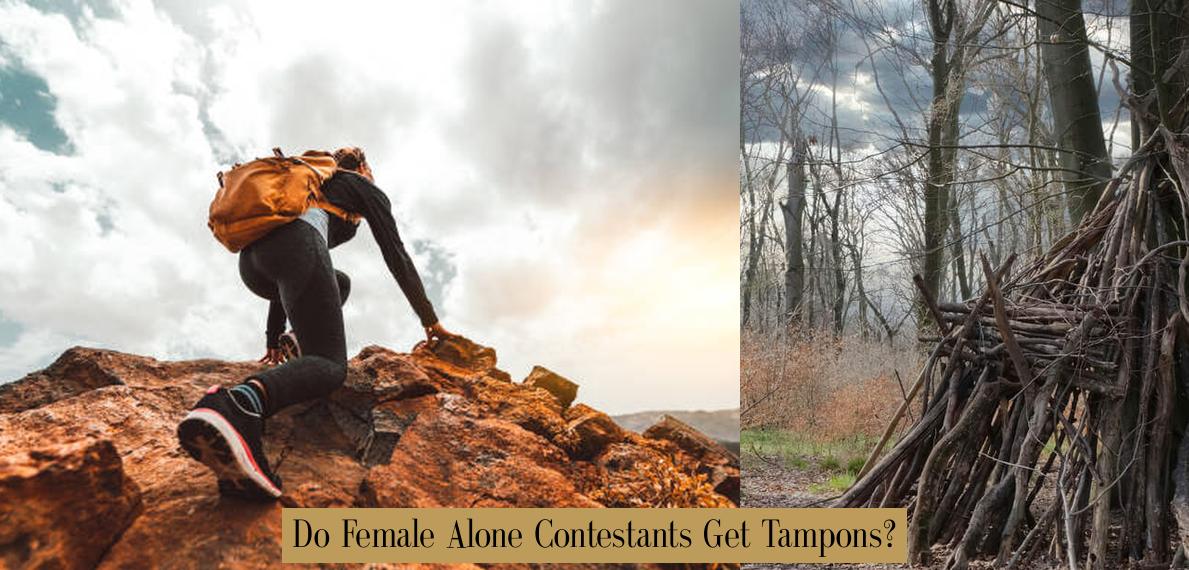Do Female Alone Contestants Get Tampons? A Period Piece (and a Hilarious Look at Wilderness Hygiene)
Alright, folks, let’s talk about something that’s rarely discussed on reality TV shows, but absolutely impacts half the population: periods. We’re diving deep into the world of “Alone,” the survival show where contestants are dropped into the wilderness with nothing but their wits (and a few carefully chosen supplies) to see who can last the longest. This week, we’re tackling the burning question: Do female contestants get tampons?
The Short Answer: Yes!
Before we delve into the fascinating (and sometimes gross) details, let’s get the obvious out of the way. Yes, female contestants on “Alone” are allowed to bring tampons (or pads, or menstrual cups, or whatever their preferred method is) with them. As former “Alone” contestant, Sara Apelian, put it, “We’re allowed to bring whatever we use for our menstrual cycles at home with us, as long as we don’t repurpose it.”
Repurpose? You mean like a crafty survival hack?
Hold on, folks, we’re about to get into a whole new level of “Alone” ingenuity. You see, while the producers are cool with contestants bringing their usual menstrual hygiene products, they draw the line at using them for things like… well, let’s just say, they’re not allowed to get creative with their hygiene supplies. Can you imagine a contestant trying to weave a fishing line out of their tampon string? Or using a pad as a makeshift bandage for a nasty cut? Now that’s a reality TV twist we’d really love to see!
But What About the Logistics?
So, how does this all work in practice? Imagine yourself in the middle of nowhere, living off the land, and then your period hits. You’ve got your trusty pack of tampons (or pads, or menstrual cups), but what about disposal? Do they just leave them lying around? Do they bury them? Do they use them to build a fire? (Okay, we’ve established they’re not allowed to use them for fire-starting, but you get the picture.)
The truth is, the show doesn’t really show us the nitty-gritty details of how the contestants handle their periods. It’s probably for the best, frankly. We’ve all seen enough “Survivor” episodes to know that even the most rugged survivalist can get a little squeamish when it comes to “the brown stuff.”
The Real Challenge: More Than Just Tampons
The real challenge for female “Alone” contestants isn’t just about access to hygiene products. It’s about managing their bodies in a truly challenging environment. Imagine being on your period, feeling exhausted, and having to hunt for food, build shelter, and keep a fire going. It’s not exactly a picnic in the park.
And let’s not forget about the psychological impact of being isolated in the wilderness, not knowing when you’ll next see a human face. It’s hard enough to deal with your period under normal circumstances, let alone when you’re feeling vulnerable and alone.
The Women of Alone: A Period of Resilience
But here’s the thing: the women on “Alone” are tough cookies. They’re resilient, resourceful, and they don’t let anything, not even a period, stop them from achieving their goals. They’ve shown that women can survive and thrive in the most extreme environments, and that’s something worth celebrating.
So next time you’re watching “Alone,” remember that the women on the show are not only competing for a $500,000 prize, they’re also defying the limitations of their bodies and proving that periods are not a weakness, but a natural part of being a woman.
Bonus Tip: If you’re ever feeling down about your period, just remember: at least you’re not trying to survive in the wilderness.
The Evolution of Period Products – A Timeline
We’ve established that “Alone” contestants have access to period products, but let’s take a trip down memory lane and explore the fascinating (and sometimes hilarious) history of menstrual hygiene.
- Ancient Times: Cloth, Sponges, and Other “Natural” Options: Before the invention of modern pads and tampons, women used a variety of materials, including cloth, sponges, and even wool. Let’s just say that “period-proofing” your clothes was a significant concern back then.
- 1800s: The Rise of the Sanitary Napkin: The 1800s saw the introduction of the first commercially available sanitary pads, often made of absorbent materials like cotton. These early pads were bulky, uncomfortable, and not exactly discreet.
- 1900s: Tampons Take the Stage: The 20th century brought us the tampon, a game-changer in menstrual hygiene. Tampons were more comfortable and less noticeable than pads, allowing women to move freely and participate in activities they couldn’t before.
- 21st Century: Innovation and Empowerment: The modern era has witnessed a surge in innovation in menstrual hygiene products, with the rise of menstrual cups, period underwear, and even biodegradable tampons. Plus, menstrual hygiene is no longer a taboo topic, thanks to increased awareness and education.
The Future of Periods:
Who knows what the future holds for menstrual hygiene? Will we one day have period-proof clothing? Will we be able to control our cycles with the touch of a button? Maybe we’ll even have period trackers implanted in our brains! (Okay, maybe not that last one.)
No matter what the future holds, one thing’s for sure: periods are a natural part of life, and women deserve to have access to safe, effective, and comfortable menstrual hygiene products. And who knows, maybe one day we’ll see the “Alone” contestants using their period products as a clever survival tool. Now that’s a reality TV twist we’d really love to see!
